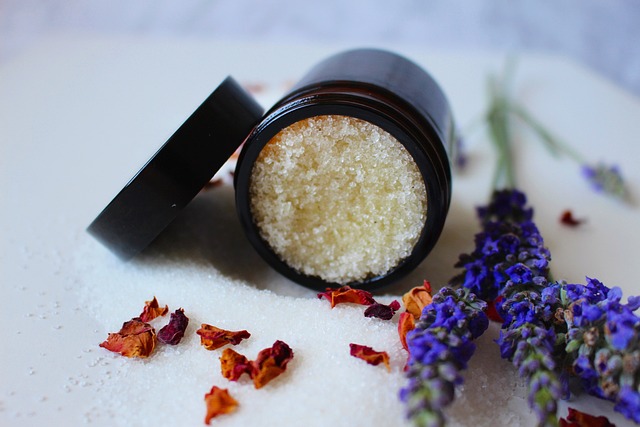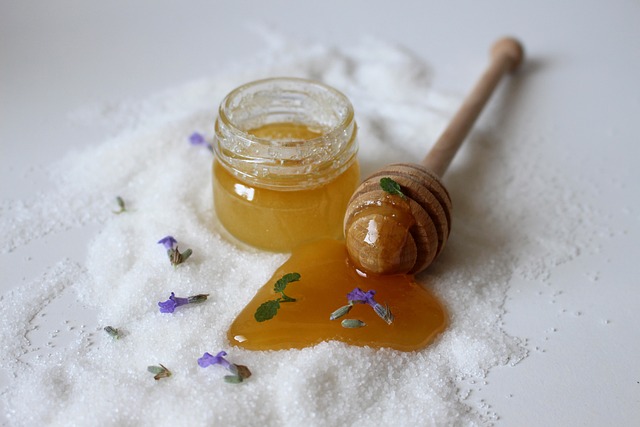Skin Resurfacing Peels: Full-face chemical peels are popular dermatological treatments offering significant anti-aging benefits by exfoliating and rejuvenating skin. Customizable in depth, they address fine lines, wrinkles, age spots, and acne scars. Suitable for various skin types and concerns, peels can range from mild daily exfoliation to deep treatments for severe conditions. Post-peel care is crucial for optimal healing; avoid harsh products, protect treated skin from UV rays, and stay hydrated. Always consult a dermatologist for personalized advice.
“Unveil your skin’s radiance with Full-Face Chemical Peel Treatments—a revolutionary approach to skin resurfacing. This comprehensive guide explores the science behind these powerful procedures, offering insights into their diverse benefits and applications.
From understanding the peeling process to choosing the ideal peel for your skin type, we demystify every step. Learn about the procedure, post-peel care, and common questions answered. Discover how skin resurfacing peels can transform your complexion, enhancing its health and appearance in today’s digital age.”
Understanding Full-Face Chemical Peels: A Comprehensive Guide

Full-face chemical peels are a non-invasive skincare procedure that involves applying a chemical solution to the skin to remove the upper layer, stimulating new cell growth and revealing smoother, brighter, and more even skin. This advanced skin resurfacing technique is gaining popularity due to its ability to address various skin concerns, such as fine lines, wrinkles, age spots, and acne scars.
Skin resurfacing peels work by chemically exfoliating the skin, removing dead skin cells, and encouraging the body to produce fresh collagen. The procedure can be tailored to different depths, depending on the patient’s specific needs and desired outcome. Superficial peels provide a mild improvement, while deeper peels offer more significant transformations. Understanding these variations is crucial when considering full-face chemical peels as a skincare solution for achieving youthful, radiant skin.
Skin Resurfacing: The Science Behind Chemical Peels

Skin resurfacing peels, a revolutionary skincare procedure, have gained significant popularity in recent years due to their remarkable ability to transform and revitalize the skin. These chemical peels work by chemically exfoliating the top layers of the skin, removing dead skin cells, and stimulating new cell growth. The science behind it involves carefully selected chemicals that act as powerful yet precise solvents, erasing the appearance of fine lines, wrinkles, and even age spots.
The process begins with a series of preparations to ensure optimal results. A dermatologist will choose an acid blend suitable for your skin type and concerns, commonly including glycolic, lactic, or salicylic acids. This blend is then applied to the face, creating a controlled reaction that gently yet effectively resurfaces the skin. As the dead skin cells are removed, new, smoother layers emerge, leading to a more youthful and radiant complexion.
Benefits and Applications of Full-Face Peels

Full-face chemical peels offer a multitude of benefits for skin resurfacing, making them a popular choice in dermatological treatments. These intense procedures involve the application of chemicals to gently exfoliate and rejuvenate the skin’s surface, removing damaged layers and stimulating collagen production. The primary advantage lies in their ability to significantly improve skin texture, reduce the appearance of fine lines and wrinkles, and even out skin tone by addressing age spots, acne scars, and hyperpigmentation.
The applications of full-face peels are diverse. They can be tailored to various skin concerns, from mild exfoliation for daily skincare routines to deep peels for severe conditions like eczema or sun damage. Medical professionals often recommend these treatments for individuals seeking a more dramatic anti-aging effect or those with specific skin imperfections that require targeted correction. Peels can also enhance the absorption of topical medications and serums, making them an effective step in a comprehensive skincare regimen.
Choosing the Right Peel for Your Skin Type

When considering full-face chemical peel treatments, selecting the right peel for your skin type is paramount to achieving optimal results and maintaining skin health. Skin resurfacing peels come in various strengths and formulations, each designed to cater to different skin concerns and types. Oily or acne-prone skin may benefit from a glycolic acid peel, known for its ability to exfoliate and unclog pores. Conversely, dry or sensitive skin should opt for milder options like lactic acid peels, which offer deep hydration while promoting skin smoothing.
Understanding your skin’s unique characteristics is key. Combination skin types can choose peels that target specific areas, such as a T-zone treatment focusing on oily zones while preserving moisture in the drier areas. Always consult with a dermatologist or skincare specialist to determine the best peel strength and active ingredients for your specific needs, ensuring you receive a personalized skin resurfacing experience.
The Procedure: What to Expect During a Chemical Peel Session

During a full-face chemical peel session, a dermatologist or skilled esthetician applies a chemical solution to the skin. This solution carefully exfoliates layers of dead skin cells, revealing smoother, brighter, and more even-toned skin below. The procedure typically takes 30 minutes to an hour, depending on the depth of the peel.
What to expect includes a series of steps: cleansing, preparation, application of the chemical solution, and finally, neutralization. You may feel a tingling or burning sensation as the peel works its magic, but these sensations are usually manageable. Post-procedure, your skin will be red and slightly irritated, similar to a sunburn. It’s crucial to follow the post-peel care instructions provided by your practitioner to ensure optimal healing and minimize potential side effects.
Post-Peel Care: Tips for Optimal Results and Recovery

After a full-face chemical peel, proper post-peel care is essential for achieving optimal results and a smooth recovery. The skin undergoes a significant transformation during and immediately following the procedure, making it crucial to maintain a gentle yet thorough skincare routine. Avoid aggressive cleansing or exfoliating for at least 24–48 hours after the peel to prevent irritation. Instead, opt for mild, pH-balanced cleansers and moisturizers recommended by your dermatologist.
During the healing process, protect your skin from the sun’s harmful UV rays by always wearing a broad-spectrum sunscreen with an SPF of 30 or higher. Stay hydrated by drinking plenty of water throughout the day to aid in cell regeneration. Refrain from using makeup or other products that might clog pores for at least a week, as this can impact the peel’s results and lead to complications. Remember that each skin type has unique needs, so always consult with your dermatologist for personalized post-peel care instructions.
Common Questions Answered: Debunking Myths About Chemical Peels

Chemical peels, a popular skin resurfacing treatment, often spark curiosity and raise concerns among potential candidates. Let’s address some common queries to clarify misconceptions surrounding this effective procedure.
One prevalent myth is that chemical peels are painful. While mild discomfort is expected, especially with more intense formulas, modern techniques allow for precise application, minimizing pain. Many patients describe the experience as similar to a mild sunburn, and post-procedure care can greatly alleviate any lingering sensitivity. Another frequent question revolves around downtime. Contrary to some beliefs, recovery time varies based on the peel type and individual skin responses. Mild peels may only require a few hours of rest, while stronger formulas might demand a brief period of avoidance from daily activities, but complete downtime is rarely necessary. Additionally, there’s a common misconception that chemical peels are suitable for all skin types. However, specific peel formulations cater to different skin concerns and conditions, ensuring safe and effective results when recommended by professionals.
